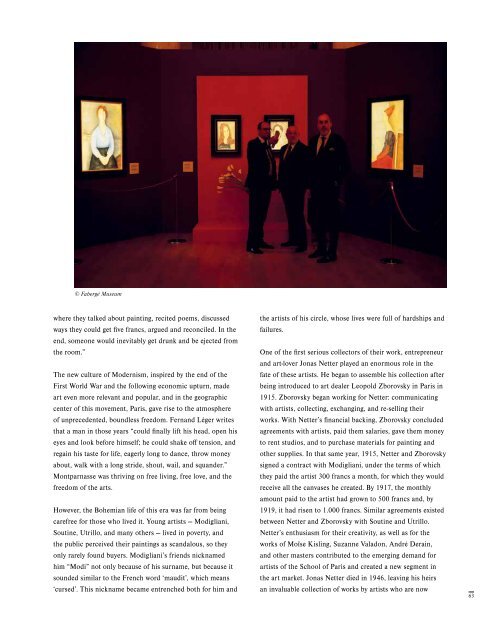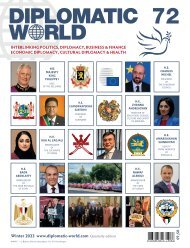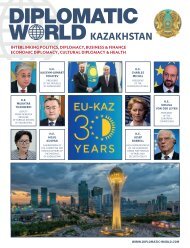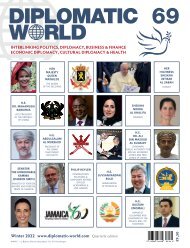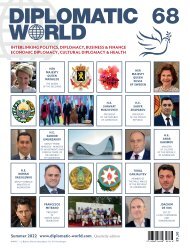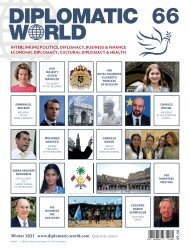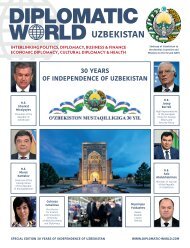You also want an ePaper? Increase the reach of your titles
YUMPU automatically turns print PDFs into web optimized ePapers that Google loves.
© Fabergé Museum<br />
where they talked about painting, recited poems, discussed<br />
ways they could get five francs, argued and reconciled. In the<br />
end, someone would inevitably get drunk and be ejected from<br />
the room.”<br />
The new culture of Modernism, inspired by the end of the<br />
First <strong>World</strong> War and the following economic upturn, made<br />
art even more relevant and popular, and in the geographic<br />
center of this movement, Paris, gave rise to the atmosphere<br />
of unprecedented, boundless freedom. Fernand Léger writes<br />
that a man in those years “could finally lift his head, open his<br />
eyes and look before himself; he could shake off tension, and<br />
regain his taste for life, eagerly long to dance, throw money<br />
about, walk with a long stride, shout, wail, and squander.”<br />
Montparnasse was thriving on free living, free love, and the<br />
freedom of the arts.<br />
However, the Bohemian life of this era was far from being<br />
carefree for those who lived it. Young artists — Modigliani,<br />
Soutine, Utrillo, and many others — lived in poverty, and<br />
the public perceived their paintings as scandalous, so they<br />
only rarely found buyers. Modigliani’s friends nicknamed<br />
him “Modi” not only because of his surname, but because it<br />
sounded similar to the French word ‘maudit’, which means<br />
‘cursed’. This nickname became entrenched both for him and<br />
the artists of his circle, whose lives were full of hardships and<br />
failures.<br />
One of the first serious collectors of their work, entrepreneur<br />
and art-lover Jonas Netter played an enormous role in the<br />
fate of these artists. He began to assemble his collection after<br />
being introduced to art dealer Leopold Zborovsky in Paris in<br />
1915. Zborovsky began working for Netter: communicating<br />
with artists, collecting, exchanging, and re-selling their<br />
works. With Netter’s financial backing, Zborovsky concluded<br />
agreements with artists, paid them salaries, gave them money<br />
to rent studios, and to purchase materials for painting and<br />
other supplies. In that same year, 1915, Netter and Zborovsky<br />
signed a contract with Modigliani, under the terms of which<br />
they paid the artist 300 francs a month, for which they would<br />
receive all the canvases he created. By 1917, the monthly<br />
amount paid to the artist had grown to 500 francs and, by<br />
1919, it had risen to 1.000 francs. Similar agreements existed<br />
between Netter and Zborovsky with Soutine and Utrillo.<br />
Netter’s enthusiasm for their creativity, as well as for the<br />
works of Moïse Kisling, Suzanne Valadon, André Derain,<br />
and other masters contributed to the emerging demand for<br />
artists of the School of Paris and created a new segment in<br />
the art market. Jonas Netter died in 1946, leaving his heirs<br />
an invaluable collection of works by artists who are now<br />
63


